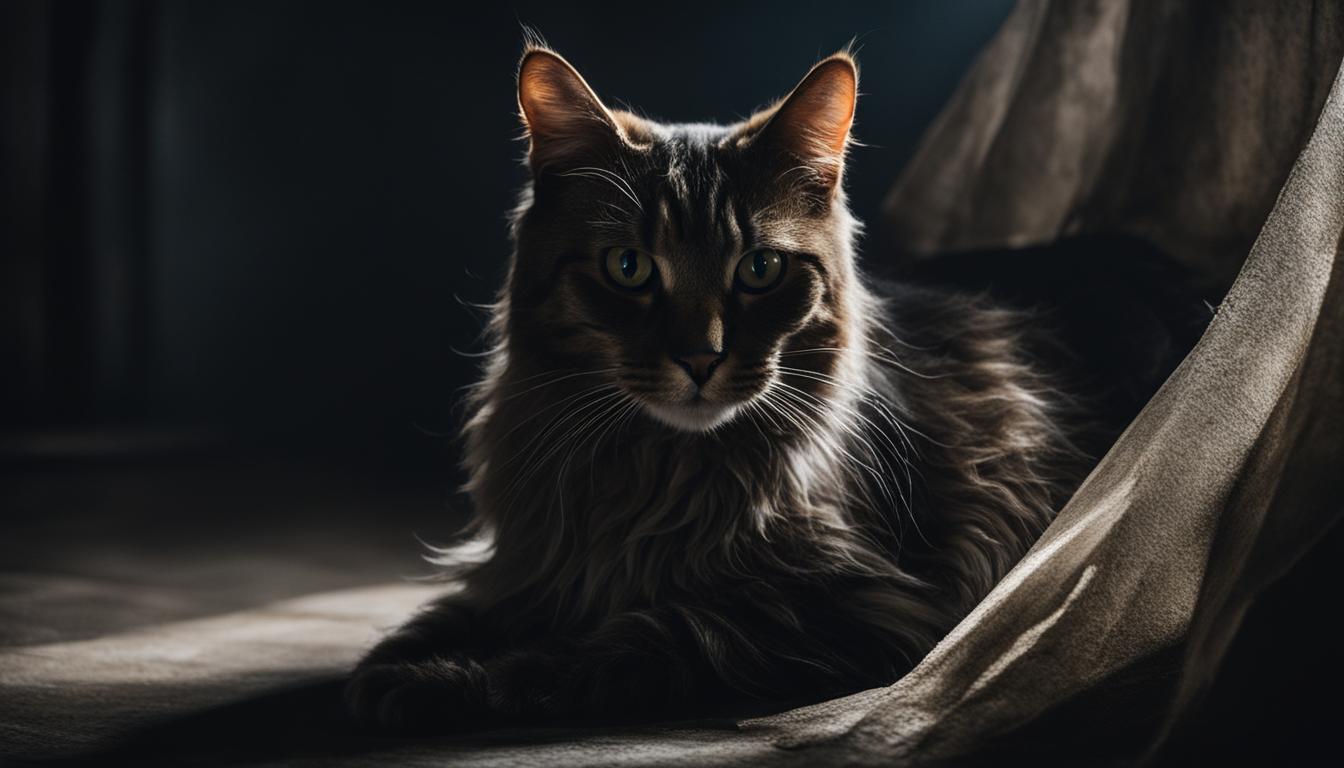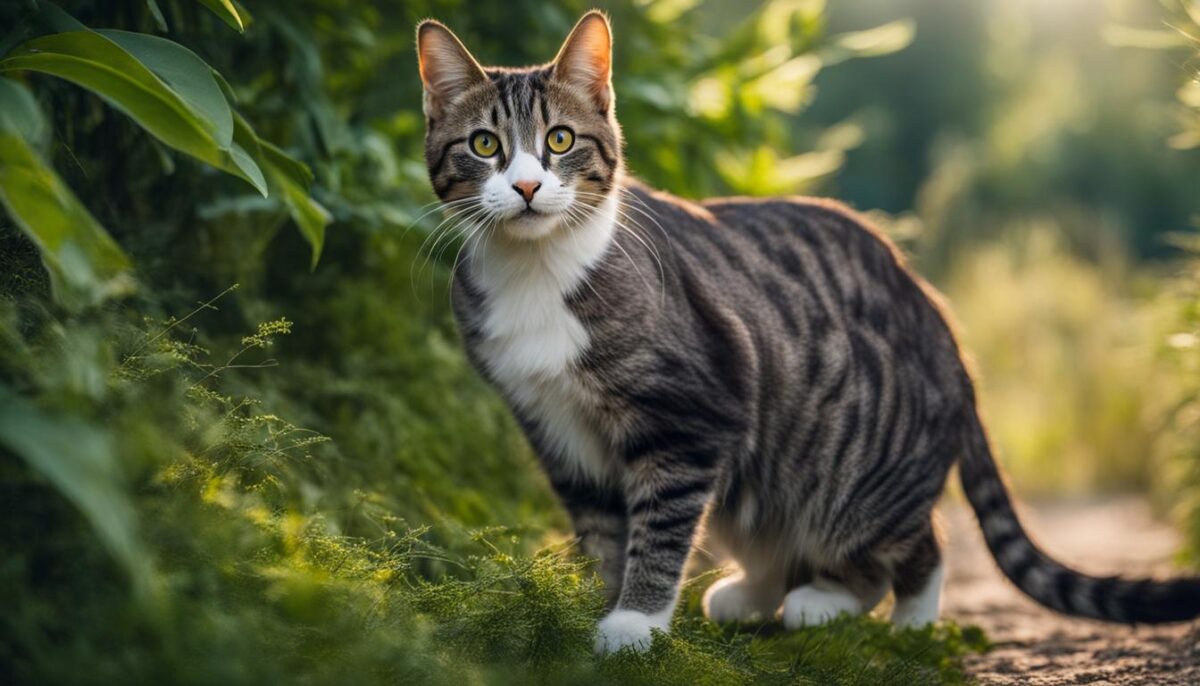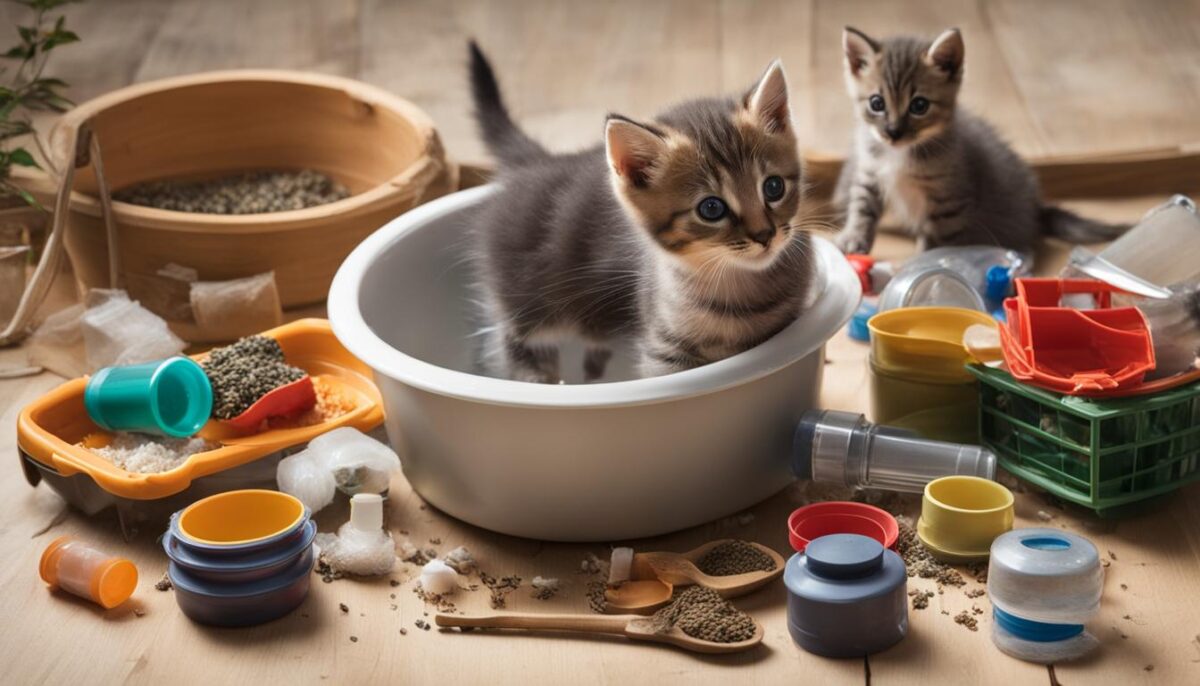If you love cats, you might worry about keeping them healthy. One sickness you might have heard of is feline distemper. It’s also called feline panleukopenia virus. That’s a big name, but it’s a big problem for cats, too. This virus is really good at spreading between cats and can make them very sick. It’s something that can affect their bone marrow, tummy, and skin. Little kittens, cats that haven’t gotten their shots, or cats that are already feeling weak might get this sickness more easily. The tricky part is that this virus can stick around for a long time and can survive in many places, even if it’s cold or if some cleaners are used. So, it’s a big threat to cat health, and we have to be careful about contagious diseases in cats.
Key Takeaways
- Feline distemper is a serious disease for cats.
- The sickness is caused by the feline panleukopenia virus.
- Kittens and unvaccinated cats are most at risk.
- This virus can live in places for many years.
- It’s important to keep your cat’s shots up to date.
Understanding Feline Panleukopenia Virus
Have you heard of the feline panleukopenia virus? It’s a big name for a tiny germ that can make cats very sick. This germ is also known as feline distemper, and it’s a kind of parvovirus in cats. When a cat catches this germ, it can affect their whole body, especially their tummy and blood cells.
Just like people, cats have an army inside them that fights germs. This army is made up of something called white blood cells. But when the feline panleukopenia virus comes in, it makes the number of these white bloods cells go down. This means the cat’s body can’t fight off the germs as well, and the cat can get very sick.
What Exactly Is Feline Panleukopenia
Feline panleukopenia is like a cold for cats, but much worse. It can spread to other cats really quickly, making it one of the most contagious cat diseases out there. When a cat gets this disease, they might feel very tired, not want to eat, and have a tummy ache. Some cats can even get it from their mom before they’re born or while they are drinking their mom’s milk.
Why It’s Often Confused With Canine Viruses
Even though it’s called feline distemper, it’s not the same as the dog version, which is also confusingly called distemper. The one cats get is just for them, and it doesn’t spread to dogs. But because their names are similar, it can make it tricky for us to remember which is which. Just remember, “feline” means it’s for cats, and “canine” is for dogs.
Understanding the Life Cycle of The Virus
This germ has a special way of living and growing. It likes to enter a cat’s body through the nose or mouth. Then, it travels to places like the bone marrow, where it can keep growing. Knowing how this germ lives helps vets take care of sick cats and stop other cats from getting it too.
Recognizing the Symptoms of Feline Distemper
Cats are super playful and fun, but sometimes they can get sick with something called feline distemper. Just like you can catch a cold, cats can catch this from other cats. Let’s look at the signs so you can help your furry friend feel better!
Physical Signs to Watch For
When a cat has feline distemper, they might show some physical signs. These signs are signals that your cat might not be feeling well. If you see any of these, it is a good idea to talk to a vet:
- Lethargy (when they’re not as lively as usual)
- Vomiting (this can be messy, so watch out)
- Diarrhea
- Fever
- Dehydration (when they need more water)
Behavioral Changes in Your Cat
Cats can also act differently if they’re not feeling good. If your cat is usually super friendly but is now hiding, this might be a sign of feline panleukopenia symptoms. Check out some other changes you might notice:
- Depression (when they seem very sad or don’t want to play)
- Aggression (when they’re grumpy or hissy)
- Tremors (shaky movements)
- Lack of coordination (if they’re wobbly or clumsy)
Remember, feline distemper is a serious cat health issue, but a vet can help your cat feel better. So keep an eye on your cat’s actions and body signs, and they’ll thank you for taking such good care of them!
Can Cats Get Distemper? Unpacking the Risks
When it comes to kitten health, understanding cat distemper risks is crucial. You might wonder, what puts our furry friends at risk? Well, kittens, unvaccinated cats, and those with weak immune systems in cats face the highest danger. The surrounding environment is a big player too because the virus can live there for a long time without a home.
Kittens are super fragile and need extra care. That’s why their health can quickly be harmed by this illness. Mamas with the virus can pass it on to their babies, either before they are born or while they’re drinking milk. To keep these tiny ones safe, it’s vital to get them shots early on. That stops the sickness from spreading and keeps them healthy.
Here’s a simple table to show what raises the chances of kitties getting distemper:
| Risk Factor | Explanation |
|---|---|
| Age | Kittens have less strong immune systems. |
| Vaccination Status | Unvaccinated cats are more exposed to the virus. |
| Immune System Health | Cats with weaker immune defenses are more at risk. |
| Environmental Exposure | The virus endures outside, making hygiene super important. |
Keeping kittens safe from this illness means being careful and making good choices for their well-being. Remember, kitten health starts with early shots and a lot of love!
Transmission Paths: How Cats Contract Distemper
When we talk about our furry friends, there are some things you should know about how cats get distemper. It’s like a bad cold that can really hurt them. Let’s find out how it spreads and what you can do to stop it.
What Puts Cats at Higher Risk
If you have a kitten, an older kitty, or one that’s going to have baby kittens, you must be extra careful. They can easily catch distemper, especially if they haven’t had their shots. Being strong and healthy helps, so having a good immune system is super important for your pets.
Environmental Factors That Contribute to Spread
Things around us can also make it easy for this cat cold to spread. If their food bowls or beds are dirty, they might get sick. Even your shoes or clothes can carry germs home to your cat!
It’s all about keeping things clean to help prevent cat diseases. If we stay clean and get our kittens their shots, we can keep them happy and healthy. Just like you feel yucky when you’re sick, our kitties do too. So, it’s up to us to help stop germs!
| Who’s at Risk | Why They’re at Risk | What to Do |
|---|---|---|
| Kittens | They’re still growing and need more protection. | Get them vaccinated early. |
| Elderly Cats | They have been around longer and might not fight off germs as well. | Keep their environment clean and visit the vet regularly. |
| Pregnant Cats | Their bodies are working hard to take care of their babies. | Ensure they’re vaccinated and stay away from sick cats. |
Diagnostic Measures: Identifying Distemper in Cats
When your cat seems under the weather, it’s important to figure out what’s wrong quickly. One sickness to be on the lookout for is feline distemper. Diagnosing feline distemper can be tricky, but with the right tests and a look at your cat’s past health records, your vet can help your cat feel better.
Bloodwork and Its Role in Diagnosis
If your cat has to go to the vet for a check-up, they might need cat bloodwork tests. These tests check the number of white and red blood cells to help tell if your cat has feline distemper. Low numbers often point to the disease. Bloodwork helps vets know what’s going on inside your cat’s body, which is super helpful for making them well again.
The Relevance of a Cat’s Medical History
Knowing what happened in the past can also help your cat now. Your vet will look at your feline medical records, like vaccination history and if your kitty has hung out with other cats who might have been sick. This helps your vet put the puzzle pieces together to see the whole picture of your cat’s health.
| Test | Why It’s Important | What It Shows |
|---|---|---|
| Blood Cell Count | Checks the number of white and red cells | Low counts can mean distemper |
| Vaccination Records | Shows if your cat’s shots are up to date | Helps rule out certain diseases |
| Interaction History | Tells if your cat has been near sick cats | Assesses risk of catching distemper |
Treatment Approaches for Infected Cats
When your furry friend gets sick with feline distemper, it’s scary. But, even though there’s no direct cure, your vet will give special supportive care for cats. This means giving treatments that make your cat feel better and help fight off the sickness.
Supportive Care and Symptom Management
First things first, cats with distemper need lots of fluids to stay hydrated. The vet might use a drip to put fluids straight into their veins. This helps them get better from being very thirsty and weak. They might also get antibiotics, which are medicines that fight off bad germs that can make the sickness worse. Medicine to stop vomiting and diarrhea is also important because it helps them keep their strength up.
Prognosis and Recovery Processes
The first few days are critical for kitties with this illness. Vets work super hard to give them the best chance to recover. Cats that make it through can become immune, meaning they can’t get the same sickness again. So, there’s a bright side – they come out stronger!
Recovery from panleukopenia takes time and patience, but cats can bounce back with good care. Your vet will watch your cat closely to see how well they are fighting off the virus. It’s like having a super nurse who understands kitty health!
If you love kitties, remember, it’s tough for them to get sick with distemper. They need kind and expert care, and it’s all about managing the symptoms. With the help of their humans and vets, cats can get through this challenging time and can go back to being happy and healthy furballs.
Preventing Feline Distemper in Your Pet
Keeping your pet cat safe from feline distemper is super important. This virus is tough and can make cats very sick. But, you can do a lot to help your furry friend stay healthy. First, let’s talk about the big shield against this disease: vaccinations!
The Critical Role of Vaccinations
Vaccines are like tiny training camps for your cat’s body. They teach your cat’s body how to fight the feline distemper virus. Getting your cat all of its shots is a top way to prevent feline distemper. It’s a simple step that helps a bunch. Make sure to chat with your vet about when to give your cat these important vaccines, okay?
Cleaning and Disinfecting Practices
Another big help in the fight against feline distemper is keeping things clean. The virus can stick around on bowls, toys, and even the floor. So, washing and disinfecting stuff your cat uses is key. And remember to wash your hands a lot, especially if you’re around other cats! These steps are extra important in houses where a lot of cats live together. Clean, clean, clean to keep your cat grin, grin, grinning!
FAQ
Can feline panleukopenia virus affect my cat’s health?
Yes, feline panleukopenia virus, also known as feline distemper, is a serious and highly contagious disease that can significantly impact your cat’s health. It affects cells in the bone marrow, intestines, and skin, and can be particularly severe in kittens and unvaccinated cats.
What is feline panleukopenia, and is it the same as canine distemper?
Feline panleukopenia is a virulent disease caused by the feline parvovirus. It is not the same as canine distemper; both diseases are caused by different viruses specific to their species.
How can I recognize if my cat has feline distemper?
Look for symptoms such as lethargy, vomiting, fever, diarrhea, and dehydration. Behavioral changes like depression or aggression can also occur. It’s important to act quickly if you notice any of these signs and contact your veterinarian.
What are the risks of my cat contracting distemper?
Kittens, unvaccinated cats, and cats with weakened immune systems face the highest risk. The virus is resilient and can survive in the environment for years, increasing the chance of exposure.
How do cats contract feline distemper?
Cats can get distemper through direct contact with infected animals, contact with contaminated surfaces like food bowls and bedding, or even from humans carrying the virus on their clothing and shoes.
What roles do a cat’s medical history and bloodwork play in diagnosing feline distemper?
A cat’s medical history can provide crucial information, such as vaccination records and exposure to other cats. Bloodwork is essential to diagnose the disease, as it reveals white and red blood cell counts, which are indicators of feline panleukopenia.
Once diagnosed with distemper, how is a cat treated?
There’s no cure for distemper, so treatment involves supportive care such as hydration through intravenous fluids, antibiotics to prevent secondary infections, and close monitoring by a veterinarian.
What can I do to prevent my cat from getting feline distemper?
The best prevention is a timely vaccination. Regularly disinfect your cat’s environment and practice good hygiene, such as washing your hands before and after handling your cat, especially if you come into contact with other cats.


